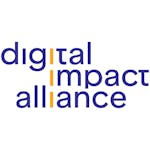In Niger, government agencies, NGOs, and international organizations are coming together to bring essential technology to rural communities. Maurice Sayinzoga, of the Digital Impact Alliance, works to ensure technology for health can be accessible to all, no matter where they live.
A three-hour drive from Niamey, Niger’s capital city, is Borgou-Darey. Tucked underneath a cloud of dust that paints the sky a yellowish hue, the village is the first location of an ambitious government initiative called Smart Villages.
Spearheaded by the National Agency for the Information Society (ANSI) in Niger, the initiative aims to connect 15,000 villages across the country to promote universal access to information and communications technology services, particularly in rural areas where more than 80% of the population lives. The Smart Villages initiative aims to lay the hardware and software infrastructure needed to build critical population services, including health care.
In late February, the Digital Impact Alliance (DIAL) joined the International Telecommunication Union (ITU) on a follow-up visit to Niger to see the initiative’s progress.
Maurice Sayingoza, the UN Foundation’s DIAL manager for insights and impact, traveled to Borgou-Darey alongside colleagues from other organizations. The road heading into the village was flanked by dry and dusty vegetation, characteristic of regions adjacent to the Sahara.
As soon as he arrived at the village, Sayingoza pulled out his phone and streamed a YouTube video uninterrupted using satellite-based internet connection installed at the village as part of this project. This level of connectivity, however, is not yet commonplace in Niger. Only about 5% of Niger’s population uses the internet.
But Smart Villages has connected Borgou-Darey by setting up a satellite dish and a router on-site and by distributing other equipment such as tablets, projectors, and “Talking Book” devices with prerecorded educational messages in local languages. This initiative could significantly expand internet coverage to more people in the country, unlocking opportunities for the mostly rural population.
In addition to the hardware infrastructure, the Smart Villages initiative built a common platform that provides client management and client communication workflows and supports various messaging channels such as SMS messaging, data services, and internet.
This common digital platform is being rolled out for villages across rural areas in Niger. When it is working at scale, different government agencies will be able to use it to provide services to citizens without having to set up parallel systems: Agronomists can share farming techniques with rural farmers, health officials can offer tips on disease control, and the Ministry of Education can share learning content using a common platform.
The initiative also harnesses successful regional initiatives, such as the electronic Integrated Management of Childhood Illness (eIMCI) protocol in neighboring Burkina Faso, which has strengthened the health care system in rural areas. The phased implementation of this initiative is a great opportunity for learning and could inform those who seek to learn from Niger’s example.
RESILIENT RURAL COMMUNITIES
As the world struggles to tackle the ongoing COVID-19 pandemic, strengthening local health systems through technology or other means is critical. Having a communication system ready to quickly convey health messaging to communities is key to enabling prevention work and fighting misinformation, among other things.
It is too early to assess the impact of this initiative, as it is still in its pilot phase. As it expands to more villages, there will be hurdles that come with implementing such an ambitious initiative in resource-constrained settings. Maintaining equipment, following up with villages spread across large distances, and extending coverage to the “Villages des nomades” (nomadic populations) will all present challenges. It is clear that only a coalition of partners, funders, and various stakeholders like this one can bring this work together.
Borgou-Darey was the first of a 15,000-village network, connected through a common digital platform and unleashing numerous opportunities for rural populations. As the benefits of this initiative materialize across other communities, farmers will get market prices, rural populations will have access to telemedicine, and emergency alerts about floods, dust storms, diseases, or other hazards will be easier to share with communities across the country.
Maurice Sayingoza’s work in Smart Villages is an example of how even ambitious goals are possible when different groups work together. As this collaboration connects more villages, thousands of people will be able to access lifesaving health information and services.
We are all safer and stronger when we #UniteforHealth. Support the UN Foundation’s work to deliver health for all.
Thanks to the Digital Impact Alliance for contributing this story.




 View All Blog Posts
View All Blog Posts

